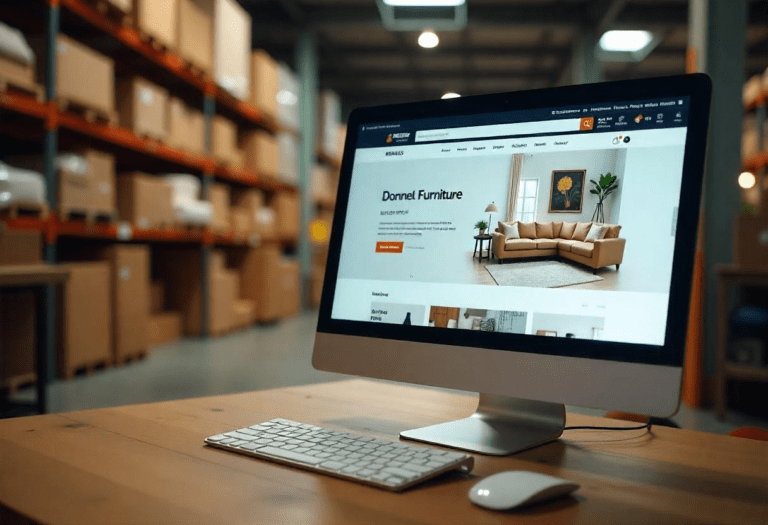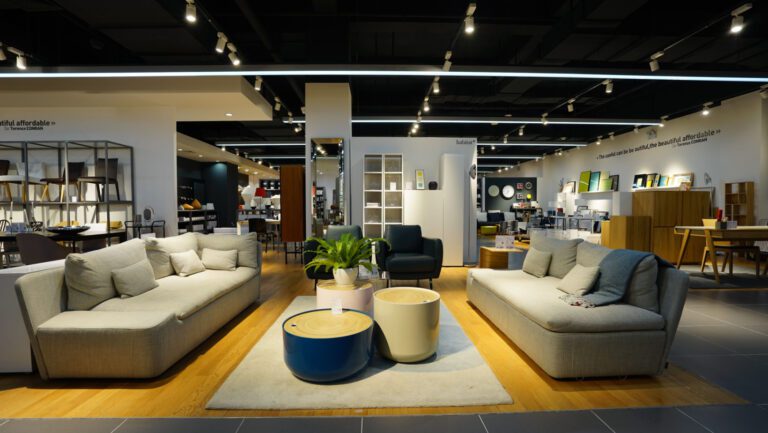inventory management

In home furnishings retail, understanding and the ability to forecast seasonal trends is key to staying ahead in terms of your ability to capitalize on demand, respond to the right trend, and keep inventories right-sized. Furniture retail is no different than other retail sections. It is even more ‘seasonal’ than

The U.S. retail landscape remains uneven, with strong consumer spending in categories like motor vehicles, parts, and building materials—likely driven by pre-tariff buying behavior—while furniture stores experienced a nearly 1% month-over-month decline. The National Retail Federation projects slower consumer spending growth in the near term due to inflation and tariff

Differentiation is key in today’s competitive home furnishings market. Furniture retailers increasingly turn to private labeling and exclusive product partnerships with manufacturers as strategic tools to stand out, build brand equity, and improve margins. For store owners, general managers, and buyers alike, the opportunity to offer something your competitors can’t

Cash flow. It’s the lifeblood of every business, and for home furnishing retailers, it’s no different. In a competitive industry where consumer demands are becoming increasingly hard to satisfy, cash flow management for retailers can be a struggle. To put it in perspective: 23% of small businesses in the US

The furniture retail industry is evolving rapidly, driven by changing consumer preferences, digital transformation, and global economic factors. While large retailers have the resources to adapt, small and medium-sized furniture retailers face unique challenges in staying competitive. To remain viable, they must adapt to these shifts, ensuring they meet customer

In the retail furniture industry, providing accurate and real-time information to customers is essential for standing out. One of the most impactful advancements in eCommerce is live inventory integration. This capability ensures that customers have access to up-to-date information on product availability, creating a better shopping experience and increasing overall

Home furnishings retailers face the challenge of meeting consumer demand, where consumers are mostly online. One key way to enhance customer experience and engage with consumers around relevant products is by implementing a live inventory system. This feature, often referred to as integrated eCommerce, not only benefits retailers but also

Global supply chains bring daily challenges Typical challenges faced by companies with global supply chains include a lack of transparency into their value chain, leading to uncertainty and delays in decision-making. Additionally, the reliance on manual communication through email and Excel spreadsheets contributes to an increased workload, potential for errors,
You might also like

The Home Furnishings Association (HFA) is aware that many retailers have been following the recent news regarding Costco’s tariff lawsuit,

Ever-mounting expectations of instant gratification have shaped our consumer landscape. The boss needs a project ASAP, and you need coffee

Mattress and furniture retailers in California and Rhode Island should prepare for upcoming adjustments to the mattress recycling fee, scheduled

How Furniture Retailers Win Online in 2026 Walk into any furniture store today, and you can sense how dramatically the

Supply chain visibility has never been more critical for furniture retailers, wholesalers, and manufacturers. The home furnishings industry highly depends
More From The HFA

Immersive Retail: Inspiring Customers with 3D, AR & VR Today’s most successful furniture retailers aren’t replacing personal service with technology, they’re using it to

Merchandising Trends: Creating Inspiring Retail Spaces that Drive Sales Your showroom is more than just a display—it’s your most powerful sales tool. Join us

Today’s most successful furniture retailers aren’t replacing personal service with technology, they’re using it to elevate it. Join us for

MEMBER-ONLY DISCUSSION: Customer Experience Connect with fellow HFA member retailers to exchange insights, challenges, and successes in navigating family business

